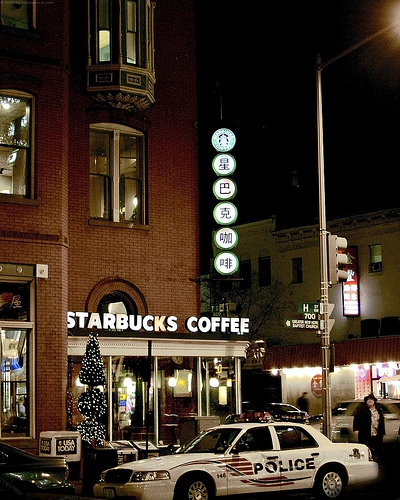A good idea to publish something about Chinatown in DC
before it becomes completely reproduced into Gallery Place. From the Boston Globe, "A legacy: Chinese in the Hub: Chinatown's story told in new book." From the article:
The Boston neighborhood is changing yet again: High-rise condos sprout amid its dense blocks of low-slung buildings, new restaurant facades gleam, and a newly constructed park leads to the Chinatown gate, the neighborhood's symbolic entrance.
Compare today's street scenes with the ones in a new book chronicling the tiny neighborhood's first century, and you can see just how far Chinatown has come. The book is "Chinese in Boston: 1870-1965" by Wing-kai To and the Chinese Historical Society of New England.
In 2004, Peter Kiang and Stephanie Fan, then copresidents of the historical society, urged To, an associate professor of history and the coordinator of Asian studies at Bridgewater State College, to take on the project.
Using archival photographs, prints, advertisements, newspaper articles, and lithographs, many from the society's collection, To assembled a rich portrait of the community's establishment and evolution, and he hasn't ignored its setbacks and dark times.
"It was good cooperation," To said, "because, as a historian, I have the skills and knowledge and experience and interest in the study of Chinese-American history. As a community organization, the Chinese Historical Society of New England has a lot of contacts with local community members and they have come up with archival material."
One of the society's goals is to "preserve and promote the stories of people and institutions who are part of the Chinatown fabric," said Caroline Chang, the society's cofounder and its part-time managing director. Gathering the 200 images for the book was a cooperative effort, Chang said, as it required extensive searches of various library and newspaper archives, as well as the generosity of community members to share their personal collections that portray the neighborhood's history.

Chinatown Starbucks photo by Racing Squirrel.
Labels: cultural heritage/tourism, historic preservation, invasion-succession theory, urban history



1 Comments:
This post is a great resource for so many blog things. Thanks for the info.
Post a Comment
<< Home